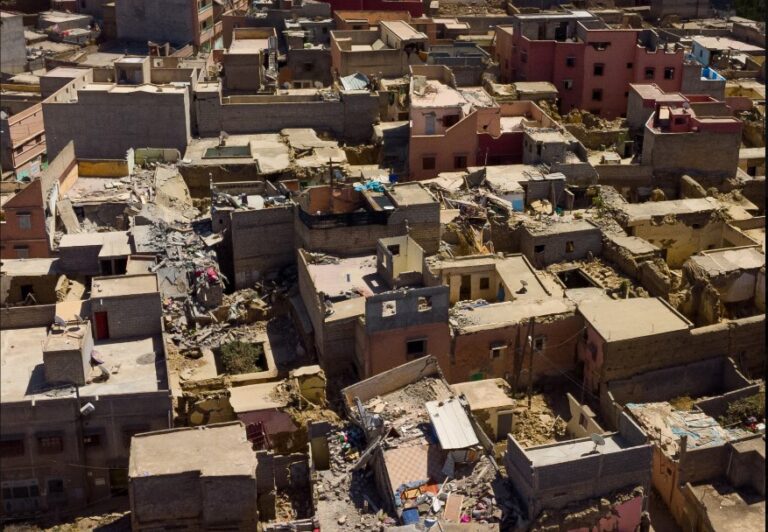We all know our planet’s crust isn’t just one solid piece. Deep below the ground, it’s made of moving tectonic plates. Where these plates meet, we have what’s called fault lines that can trigger earthquakes.
Imagine two puzzle pieces, but always trying to move. Sometimes, they bump into each other. When they do, they can cause big problems for the places above them. We call this an earthquake.
An earthquake is like a giant wave, starting at a point called the epicenter. It then spreads out, shaking the ground and anything on it. The bigger the shake, the more damage it can do. We measure how big it is with something called the Richter scale. The biggest one ever? It was 9.2 on this scale.
Table of Contents
The countries most vulnerable to earthquakes
There are some nations that frequently face the wrath of nature due to their geographical locations. Positioned right on top of restless fault lines, they experience devastating earthquakes and tsunamis. Here’s a look at a few of these countries that often deal with these natural calamities:
1. Japan
Japan sits at the top. Located in the infamous “ring of fire,” it’s no stranger to tremors. With tectonic plates like the Philippine, Okinawa and American ones constantly shifting below, significant quakes are a recurring theme. The earthquake in March 2011 stands out as a particularly tragic event, with thousands of lives lost in its wake.
2. Nepal
Coming in close is Nepal. Sharing geological features with other South Asian countries, it’s a prime spot for seismic activities. The country has faced numerous quakes over the years, but the one in 1934 was especially harrowing. Registering an immense 8.2 on the Richter scale, it remains one of the most destructive in Nepal’s history.
3. India
India, with its vast expanse, has felt the earth shake beneath its feet numerous times. The continuous movement of the Indian plate, at an estimated 47 mm per year, is a significant factor. While the southern regions have had to deal with the dual threats of earthquakes and tsunamis, other parts have also seen substantial damage due to seismic events, leading to loss of life and property.
4. Ecuador
Ecuador, a vibrant country nestled along the western coast of South America, is no stranger to nature’s rumbles. Holding the fourth spot, its geography tells a tale of towering volcanoes that occasionally roar to life. But these eruptions aren’t the only concern.
The land frequently releases seismic waves. The meeting of the Nazca and South American plates beneath its feet is a primary reason. Furthermore, significant fault lines such as Pallatanga, Quito, and Chingual crisscross the country, making certain regions especially susceptible to tremors.
5. Philippines
The Philippines, an archipelago of beauty and culture, faces a unique set of challenges. Located atop the “ring of fire” beneath the vast Pacific, it struggles with seismic activities more often than it would like. But its island nature compounds the issue.
Whenever earthquakes occur, the surrounding waters sometimes respond with massive tsunamis, making coastlines overflow. Tragically, there have been times when the earth’s shaking has awakened sleeping volcanoes, causing eruptions that have reshaped landscapes and impacted communities. These events stand as somber reminders of nature’s power.
6. Pakistan
Pakistan, a land of diverse terrains and rich history, also acutely suffers from tremors that sometimes disrupt its calm. Positioned at the confluence of the Indian and Eurasian plates, the tectonic plates are in constant motion. The provinces of Punjab and Sindh primarily rest on the Indian plate, whereas regions like Baluchistan are atop the Eurasian plate.
This tectonic movement can, at times, lead to devastating earthquakes. One such quake in the northern valleys reached a chilling 7.8 on the Richter scale, leaving behind tales of loss and resilience.
7. El Salvador
El Salvador, a gem in Central America, has faced the wrath of nature multiple times in its storied history. The ground beneath has shaken with fury on numerous occasions, with its people bearing the brunt of these seismic outbursts. These quakes aren’t a recent phenomenon.
Records show that El Salvador has been grappling with them since 1576. Over the centuries, the magnitude of these tremors has varied, with some reaching an alarming 8 on the Richter scale. Through each challenge, the spirit of the Salvadoran people shines, highlighting their strength and unity in the face of adversity.
8. Indonesia
Indonesia is a gem in Asia, known for its beauty. Yet, it often feels like the Earth shakes. Almost every year, quakes shake its ground. Big or small, they hurt homes, buildings, and, sadly, people. Some of these quakes even hit 6.1 on the Richter scale.
9. Turkey
Turkey sits in a tricky spot. Why? It’s between three big plates: African, Arabian, and Eurasian. When these plates move, Turkey feels it. Over the years, many quakes have shaken Turkey, some between 6 and 7.2 on the Richter scale. With so many quakes, the world watches and worries.
10. Mexico
Mexico’s challenge is twofold. First, it’s where three seismic plates meet: North America, the Pacific Plate, and the Cocos Plate. This makes quakes common. But there’s another problem. Many buildings aren’t built strong. So, even a small quake can cause big damage. And, sadly, this means loss of life. One big quake, measuring 7.2, nearly wiped out the city of Guerrero.












